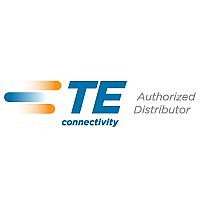1-1490413-6 Tyco Electronics, 1-1490413-6 Datasheet - Page 3

1-1490413-6
Manufacturer Part Number
1-1490413-6
Description
TOOL NEST DIE HD SEAMLESS 4AWG
Manufacturer
Tyco Electronics
Datasheet
1.1-1490413-4.pdf
(5 pages)
Specifications of 1-1490413-6
Connector Type
Terminals and Splices
Crimp Handle
1490748-1, 1490749-1
Crimp Or Cable Size
4 AWG
Lead Free Status / RoHS Status
Not applicable / Not applicable
Rev
Crimping Dies for Heavy-Duty Seamless Straight Ring Tongue Terminals and Butt Splices
DANGER
Indenter
Terminal or Splice
Centered in Nest
(See Detail)
Nest
3. Insert the stripped wire into the wire barrel of the
terminal or splice making sure that the end of the
wire is visible through the sight hole.
4. Center the terminal or splice in the nest as
shown in Figure 4.
5. Activate the head or tool according to the
instructions included with the head or tool so that
ram advances and holds the terminal or splice in
place. DO NOT deform the wire barrel.
6. For terminals, insert the stripped wire into the
wire barrel until the end of the conductor is visible
in the sight hole. For butt splices, insert a stripped
wire into the wire barrel until the end of the
conductor is visible in the sight hole.
7. Activate the head or tool to crimp the wire
barrel.
NOTE
B
i
Terminal
Ï Ï
Ï Ï Ï Ï
Ï Ï
To avoid personal injury, make sure to exercise
caution when holding terminals, splices, or wire
near the crimping area.
If the terminal or splice sticks in the die after
crimping, grasp the wire close to the crimp and
apply a rocking motion to remove it from the die.
Sight Hole
Facing Nest
Wire Visible
Through
Sight Hole
Figure 4
Detail
Indenter
Nest
Ï Ï
Ï Ï Ï Ï
Ï Ï
Splice
Sight Hole
Facing Nest
Wire Visible
Through
Sight Hole
Tyco Electronics Corporation
5. MAINTENANCE AND INSPECTION
5.1. Daily Maintenance
It is recommended that each operator of the dies be
made aware of, and responsible for, the following
steps of daily maintenance:
5.2. Periodic Inspection
Periodic inspections should be performed by quality
control personnel. A record of scheduled inspections
should remain with the dies or be made available to
personnel responsible for the dies. Though
recommendations call for at least a monthly
inspection, the inspection frequency should be based
upon the amount of use, working conditions, operator
training and skill, and established company
standards. These inspections should be performed in
the following sequence.
A. Visual Inspection
CAUTION
DANGER
8. For splices, insert a stripped wire into the
uncrimped wire barrel until the end of the
conductor is visible in the sight hole.
9. Inspect the crimp according to Figure 5. This is
included as an aid to the tool operator ONLY. It is
not intended to serve as a quality control
inspection for qualifying finished crimps on these
terminals and splices. Use only terminals or splices
that meet the conditions shown in the ACCEPT
column. Terminals and splices displaying the
features shown in the REJECT column can be
avoided by careful use of these instructions and by
performing the maintenance and inspection
procedures described in Section 5.
1. Remove dust, moisture, and other contaminants
from the dies with a clean brush, or a clean, soft,
lint–free cloth. DO NOT use objects that could
damage the dies.
2. If dies are coated with oil or preservative, wipe
them clean—particularly in the crimping
areas—before placing them in use.
3. When dies are not in use, make certain all
surfaces are protected with a THIN coat of any
good SAE 20 motor oil, then mate and store them
in a clean, dry area.
1. Remove all lubrication and accumulated film by
immersing the dies in a suitable degreaser that will
not affect paint or plastic.
!
Damaged terminals or splices should not be
used. If a damage is evident, the terminal or
splice should be cut from the wire and replaced
with a new one. DO NOT re-terminate terminals
or splices.
To avoid personal injury, DISCONNECT THE
POWER SUPPLY before performing
maintenance, adjustments, inspection, or repair.
408-10110
3
of 5




